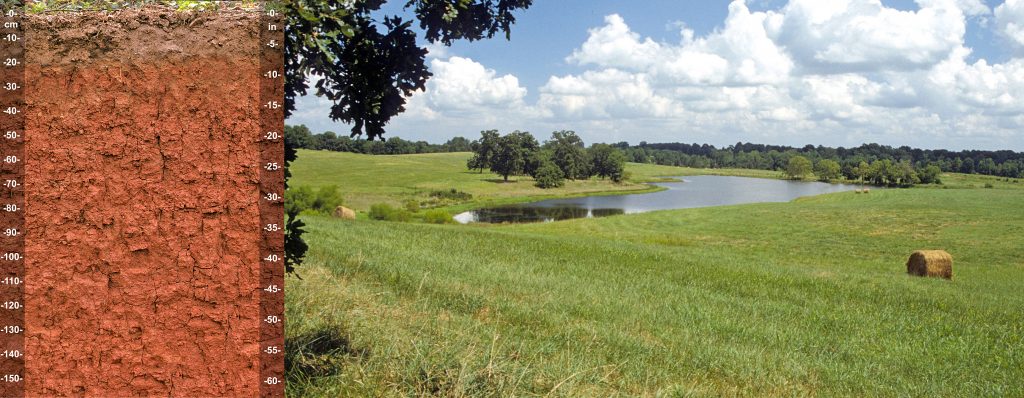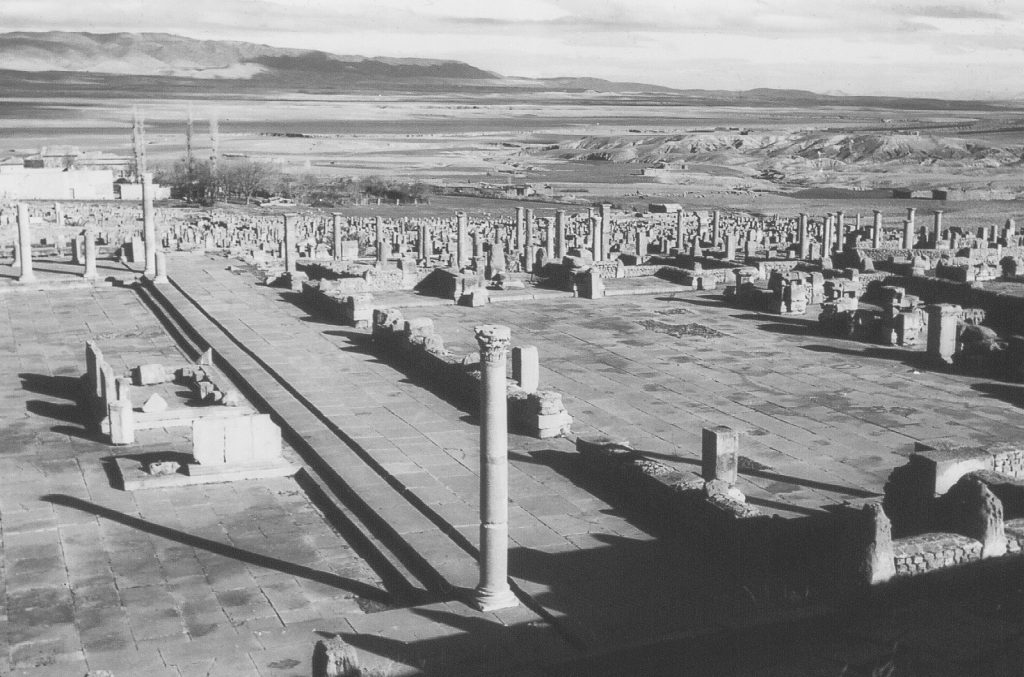1 Introduction
Colby Moorberg; Eric Brevik; and Kaizad Patel
Abbreviations
NRCS – Natural Resources Conservation Service
SWCS – Soil and Water Conservation Society
US – United States
USDA – US Department of Agriculture
Soils and Agriculture

Parikh, S. J., and B. R. James. 2012. “Soil: The Foundation of Agriculture.” Nature Education Knowledge 3 (10): 2. https://www.nature.com/scitable/knowledge/library/soil-the-foundation-of-agriculture-84224268.
This article introduces the crucial role soils play in agriculture. Soil is the primary source of plant nutrients and organic matter. Although agriculture supports life, it also disrupts natural ecosystem processes. Conventional agricultural practices have increased rates of soil erosion, highlighting the need for sustainable soil management as part of agricultural processes.
World History of Agriculture, Erosion, and Conservation
Brevik, Eric C. 2014. “Soil Science: Selected Historical Highlights in Celebration of the Upcoming International Year of Soils.” Soil Horizons 55 (6). https://doi.org/10.2136/sh2014-55-6-gc.
This short article briefly reviews highlights in the history of soil science in the US, including aspects of soil survey, soil geomorphology, soil erosion, and tools used in soil science, all of which apply to soil management. It also briefly introduces soil and human health connections, an area where soil management and conservation is very important.
Callaway, Shelby. 2018. “A Warning from Vanished Civilizations.” SlideShare presented at the 2018 SWCS International Annual Conference, July 31. https://www.slideshare.net/SWCSevents/a-warning-from-vanished-civilizations.
This SlideShare is a presentation from the SWCS meeting that includes pictures from some of Lowdermilk’s travels (see Lowdermilk 1999 below) for the “Conquest of the Land Through 7,000 years” and summarizes why Lowdermilk’s work is so important even to this day. The photographs provide context to Lowdermilk’s work, showing some of the diverse environmental settings and cultures within which he conducted his investigation into soil cultivation and the resulting success or failure of the civilizations supported.
Lowdermilk, W.C. 1999. Conquest of the Land Through 7,000 Years. Agriculture Information Bulletin 99. Washington, D.C.: USDA NRCS. https://nrcspad.sc.egov.usda.gov/DistributionCenter/product.aspx?ProductID=109.
This NRCS bulletin is a first-hand account of Walter Lowdermilk’s observations during his world travels to investigate the effects of hundreds or thousands of years of cultivation on land. His objective was to learn from the experience of these older civilizations and search for solutions to soil erosion and land use problems facing the US. He observed that soil erosion can be significant enough to topple empires, while conservation practices helped sustain other civilizations for centuries. The bulletin was originally printed in 1953 and later reprinted in 1994 without change. Lowdermilk was the former assistant chief of the Soil Conservation Service, now called the USDA NRCS.

Montgomery, David R. 2007. “Soil Erosion and Agricultural Sustainability.” Proceedings of the National Academy of Sciences 104 (33): 13268–72. https://doi.org/10.1073/pnas.0611508104.
Conventional agriculture accelerates soil erosion rates. Soil erosion rates from agriculture are much higher than soil formation rates and even long-term geological erosion. This article compiles data from a number of global studies to determine the rates of soil erosion due to agricultural practices.
“Origins of Agriculture.” 2019. In Encyclopedia Britannica. Chicago, IL: Encyclopedia Britannica, inc. https://www.britannica.com/topic/agriculture.
This online encyclopedia article begins with a description of the range of definitions of agriculture and a description of the domestication of plants and animals. Techniques used for studying the origin of agriculture are then described, followed by a series of sections representing a timeline of agricultural history dating back to the dawn of agriculture at the end of the last ice age 11,700 years ago.
SWCS Events. 2019. The Lasting Legacy of Walter Lowdermilk’s Conquest of the Land Through 7,000 Years. Conservation Matters. Ankeny, IA: Soil and Water Conservation Society. https://vimeo.com/313261304.
This link is to an interview with Shelby Callaway. It provides additional insight and perspective for the materials in the Calloway (2018) presentation above and into the work of Walter Lowdermilk in the Conquest of the Land Through 7,000 Years (1999). This presentation is a good introduction to Lowdermilk’s seminal work.
USDA. 2000. “A Condensed History of American Agriculture 1776–1999.” USDA. https://www.usda.gov/sites/default/files/documents/history-american-agriculture.pdf.
This one-page document from the USDA is a timeline of agricultural history in the US from 1776 to 1999. Events noted in the timeline primarily include technological advances and changes in federal policy. Agricultural history related to native civilizations or the colonial period in North America are not included.
Inventory of Soil and Water Resources
FAO and ITPS. 2015a. “Chapter 3 – Global Soil Resources.” In Status of the World’s Soil Resources (SWSR) – Main Report. Rome, Italy: Food and Agriculture Organization of the United Nations and Intergovernmental Technical Panel on Soils. http://www.fao.org/global-soil-partnership/resources/highlights/detail/en/c/387547/.
This chapter from the Status of the World’s Soil Resources FAO report summarizes the condition of soils around the world. It begins with a brief overview of soil science concepts, including properties and mapping. It then details soil qualities critical for soil to deliver ecosystem services and the current status of those qualities worldwide. The chapter ends with an outline of efforts to assess global soil change. The link provided is a website that includes an outline and download links for every chapter of the Status of the World’s Soil Resources FAO report.
FAO and ITPS. 2015b. “Chapter 14 – Regional Assessment of Soil Changes in North America.” In Status of the World’s Soil Resources – Main Report. Rome, Italy: Food and Agriculture Organization of the United Nations and Intergovernmental Technical Panel on Soils. http://www.fao.org/global-soil-partnership/resources/highlights/detail/en/c/387547/.
This chapter from the Status of the World’s Soil Resources FAO report summarizes the soil resources of North America that, for this report, encompasses Canada and the US. The data sources for the report include Agri-Environmental Indicators report from Agriculture and Agri-Food Canada for Canada and the USDA National Resources Inventory for the US. The chapter first introduces and then describes the continent based on ecoregions. Soil threats like acidification, salinization, and compaction are described, followed by “major soil threats” like erosion, nutrient imbalances, organic carbon storage, and biodiversity. Canada was used as a case study in Section 14.5 to detail those threats to Canadian soils. The link provided is a website that includes an outline and download links for every chapter of the Status of the World’s Soil Resources FAO report.
USDA NRCS. 2023. “Summary Report: 2015 National Resources Inventory.” US Department of Agriculture. https://www.nrcs.usda.gov/nri.
The 2015 National Resources Inventory summarizes a series of natural resource inventories conducted by the USDA NRCS. The report outlines the status, condition, and trends in soil, water, land, and related resources on non-federal lands in the US. The report is lengthy, 210 pages. However, each chapter contains many maps and summary tables to supplement the text. Chapter 2 provides highlights of the overall report. Additional chapters cover broad land cover and use, cropland and pastureland inventories, soil characteristics, wetlands, and methodology. The National Resources Inventory data is collected annually and summarized at 5-year intervals. The link provided is a website with download links for the full report, as well as summary reports focused on more specific topics, such as the National Resources Inventory wetlands data.

